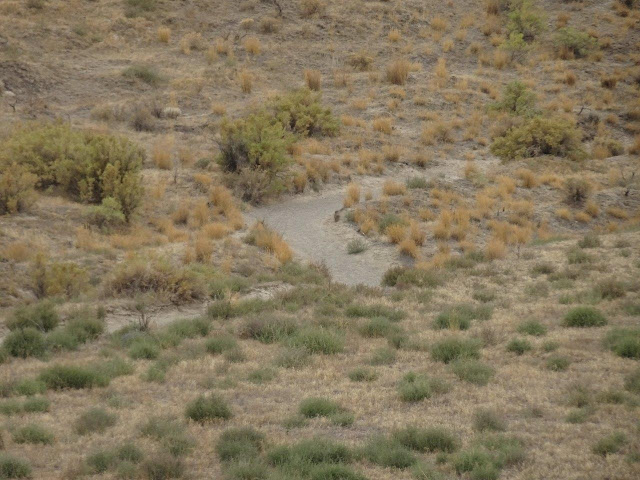Today, I am back near Twin Falls, ID, because I wanted to see the Hagerman Fossil Beds and the little visitor center. Frankly, the visitor center was disappointing, but the views of the Snake River west of Twin Falls was worth it, and the views of the Oregon Trail was a bonus.
This country is very dry and mostly flat, with deep gorges where river flow through, especially the Snake River. The Snake was formed about 17,000 years ago when a huge lake, Lake Bonneville, broke through its dam and flooded. The lake at that time covered most of southern Idaho and northern Utah. When it flooded, it is said it released 1,000 cubic miles of water in just a few weeks, even more than the great Lake Missoula Flood. The flood created the Snake and the Columbia River.
In the photo below, you can see some of the bluffs created by the flooding. Here is an article about the Bonneville Flood--https://wanderwisdom.com/travel-destinations/The-Lake-Bonneville-Flood-And-Its-Effects-On-Idaho-Landscape
There is very little rainfall here, but the various dams and lakes along the Snake and its tributaries store a lot of water for agriculture. If it is not watered, it is dry and looks dead.
The Hagerman horse is believed to look like this.
The fossil beds are along the Snake River in the cliffs where they were exposed by the floor and continue to be exposed by wind and rain. 

The road overlooking the fossil beds along the Snake River follows alongside the Oregon Train, so this was a nice bonus.
The tracks seen in this photo are the Oregon Trail. Up on the ridge, not visible from this view is the Emigrant Trail, which partly follows the Oregon Trail. Obviously, both trails are not far from the river and the land is relatively flat, so it must have been a good place to haul wagons and animals.
Here is a closeup of the trail.
Looking back, you can see the trail cut back and forth to go over this hill.
Another section of the Oregon Trail.
The next posting is about the Malad Gorge, which was not too far away, so good combination of sites to visit.












No comments:
Post a Comment